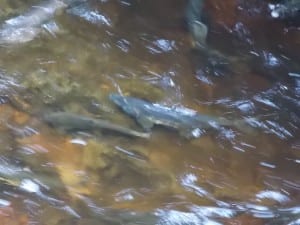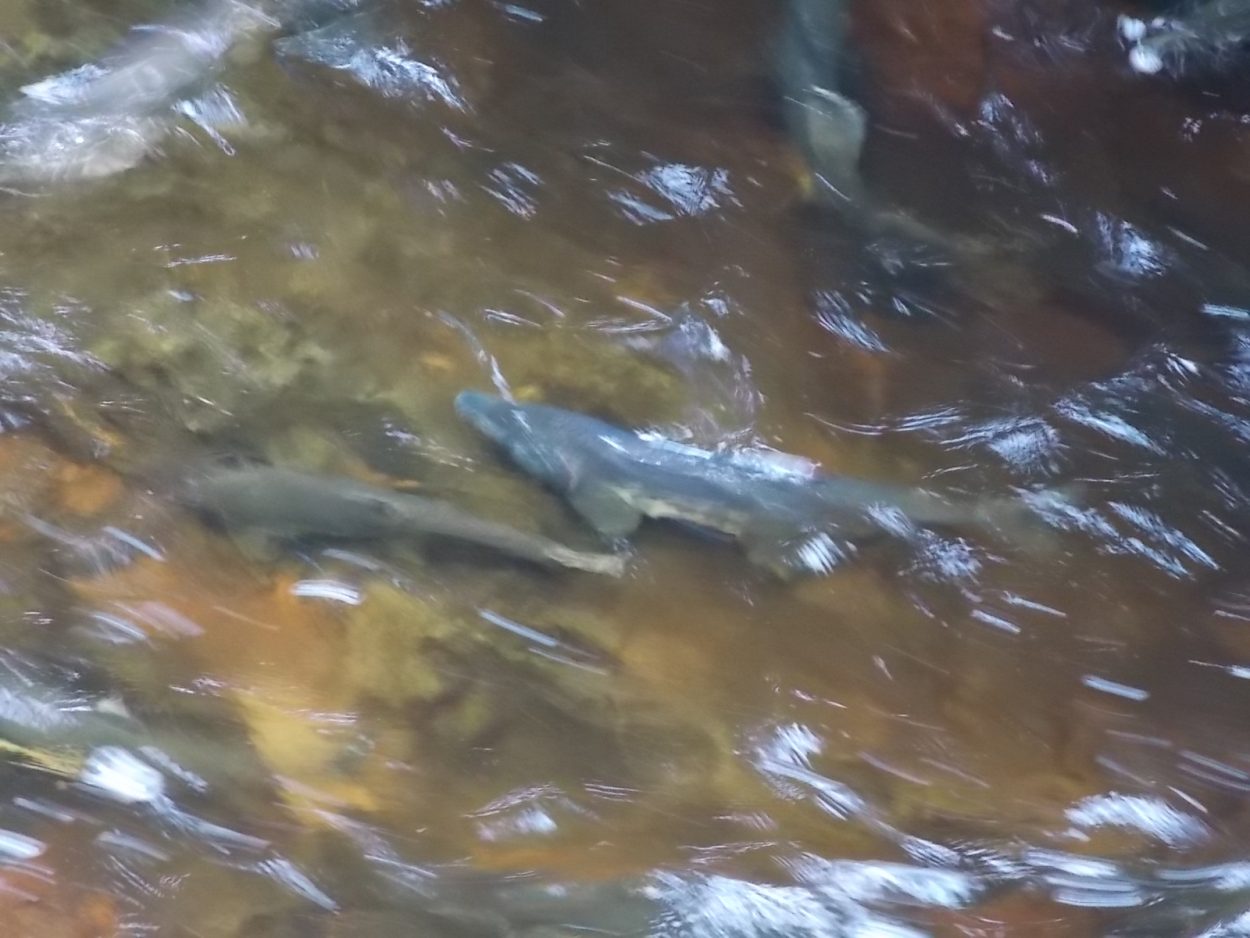Federal scientists are predicting a catch of nearly 30 million pink salmon in Southeast Alaska this summer. That’s a little better than the forecast put out last fall by the Alaska Department of Fish and Game for a catch of 22 million humpies. But its still not even one third of the record setting catch of 2013.
For mobile-friendly audio, click here:
National Oceanic and Atmospheric Adminstration fisheries scientists compile their forecast based on an annual trawl survey of juvenile pink salmon.
“It’s the peak count in either june or july for a particular year,” said Joe Orsi, a fish research biologist for the Alaska Fisheries Science Center in Juneau. “They basically have gone to sea for two-three months. And they’ve undergone most of their survival which happens near shore. We’re sampling out in the middle of Icy Strait as all these stocks move past. So we’re getting a sub-sample of the fish as they head out to the ocean.”

In 2012, fishing boats caught over 21 million pinks, when the parents of this year’s run were returning to spawn. Orsi said scientists have started assigning an annual rank for the ocean conditions observed for the outgoing juvenile pinks. That’s based on 17 years of observing other variables like ocean currents, migration timing and predation by other salmon species. Those factors ranked the incoming pink salmon return at number 13 out of the past 17 years.
Federal scientists have been forecasting Southeast pink returns for a decade. Orsi noted the forecast has been close for most of that time. “When we’ve actually made forecasts for the last 10 years, 8 of the last 10 years have been very close, like within seven percent of the actually harvest. This last year was an exception and so was 2006, which was a result of the really poor ocean conditions of 2005. So all in all our forecasts have been pretty good.”
Neither the federal or state forecasts were anywhere near the record setting harvest of 2013. Fishing boats caught over 94 million pinks caught last year, and forecasts were a little more than half of that amount.
On other note for the upcoming season, Ocean Beauty Seafoods does plan to operate its processing plant in Petersburg this year. The facility was shuttered in 2012 after the state ferry Matanuska collided with the cannery building. The company also did not operate the plant in 2010 because of a weak salmon run. That’s not the case for 2014, according to Ocean Beauty vice president of marketing Tom Sunderland. “Certainly the plant’s recovered from the damages that it had. It’s all fine, it’s all running,” Sunderland said. “Everything’s up to speed. And we’re actually hoping for a decent catch in Southeast this year so I think that running the plant will be great for us this year.”
Ocean Beauty and Icicle Seafoods operate Petersburg’s two salmon canneries.










